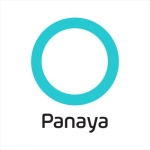In ALM, the most valuable features are the overview, the primary requirements, test cases, defects, and traceability. Manual applications handle the regulations, so we must have the tracking capabilities. Even some of the core systems are not allowed to go down. It's very important that we know what we have tested and what is working and what is not working. That we can find out from ALM.
The first time we installed it was a long, long time ago. We bought small, five license versions of Test Director from Mercury in 2007 and it has continuously grown since then. Today we have 600 users and 130 active projects. The environment gets bigger and bigger all the time.
It's complicated to upgrade. For ALM, we have roughly 600 users. In ALM, we have roughly 130 active projects. So it takes a long time to upgrade. Some of the big projects are 5 GB of data. To migrate that to a new version takes maybe two or three hours, even if we have huge hardware.
It's very complicated. We'd gladly like to upgrade to newer versions. We plan to use Octane, but we will not end up in a situation where we have two tools. We would like to, but we must find a smarter way to do some kind of migration. Several of the applications have regulations that we follow and we must be able to track 10 years back. We can't just throw away the data we have in there.
If not upgrading ALM, probably they would like to search and would like to find something else. They really need to find a smart way to migrate some part of it. Of course, it's a totally different tool.
We have looked at many alternatives. We have compared ALM to almost everything. We even have JIRA for smaller projects now. ALM and JIRA are two totally different products that are for two totally different needs.
For example, we have an on-premises solution of ALM. You have to log into the active directory, so it's not so easy to give to someone outside the company. It's also struggling with different browsers. It's doesn’t work very well on a Mac, for example. The Mac developers and the Mac teams don't like ALM. Now it works much better on Chrome, but we're struggling there as well. They haven't been following the world with browser support. It's problematic to use ALM in Edge, for example.
But with JIRA, on the other hand, you don't have any requirements. It's easy to set up. It's easy to start up and have your backlog there. But after a while, you figure out what is going on. For maintenance and for testing, you need a plugin for this, you need a plugin for that, and you need a plugin for something else. It's not so easy to get the overview or the helicopter view of it, if you compare that with ALM. But I understand why some like it and it has some kind of need. I hope we can mine that capital when we upgrade to Octane.

















Yes there are situations sometimes like you described. HP is pretty good at releasing patches to fix a situation you described. Have you checked the Support Site to see if there is a patch released for this situation?